 Omega is a reliable source for pressure transducers and load cells that provide high quality data in a myriad of processes. In order for pressure sensors and load cells to provide the information our customers are seeking, the pressure or force of that process must reach a sensing element. The sensing element reacts to the force or pressure of the process, creating an output signal that can be interpreted by a readout device or a data-collection device. The sensing element, therefore, is the heart of the transducer or load cell.
Omega is a reliable source for pressure transducers and load cells that provide high quality data in a myriad of processes. In order for pressure sensors and load cells to provide the information our customers are seeking, the pressure or force of that process must reach a sensing element. The sensing element reacts to the force or pressure of the process, creating an output signal that can be interpreted by a readout device or a data-collection device. The sensing element, therefore, is the heart of the transducer or load cell. The Pressure Measurement System theory
The pressure measurement system is made up of a sensing element with four strain gauges applied to it. The strain gauges are configured in a Wheatstone bridge, where all 4 resistors (labeled R1 thru R4 in Figure 2) are equal, and change by equal magnitude proportionally,when strain is applied. The greater the force or strain (input), the greater the output. A Wheatstone bridge device requires 4 wires for its connection, positive and negative excitation, and positive and negative sensor output.
A typical pressure sensor works producing a strain gauge output as the deflection of a diaphragm is caused. Depending on the strain gauge technology the output can vary from 1 to 3 millivolts per volt (mV/V) to as much as 10 to 30 mV/V. To calculate your full scale output, you would multiply the output of the sensor by the voltage used to power the device. For example, for a 3 mV/V sensor, if we used 10 volts DC as our excitation voltage, we would expect to get 3 mV/V x 10V=30 mV at full scale.
A typical pressure sensor works producing a strain gauge output as the deflection of a diaphragm is caused. Depending on the strain gauge technology the output can vary from 1 to 3 millivolts per volt (mV/V) to as much as 10 to 30 mV/V. To calculate your full scale output, you would multiply the output of the sensor by the voltage used to power the device. For example, for a 3 mV/V sensor, if we used 10 volts DC as our excitation voltage, we would expect to get 3 mV/V x 10V=30 mV at full scale.



Typical Reaction of Diaphragm When Pressure is Applied.
Examples
One good example of how a pressure sensor works is the PX4600 pressure transducer. The pressure from the process that the customer is trying to measure will be brought to the diaphragm element through an access port. The pressure will cause a deflection of a diaphragm, stressing the Wheatstone bridge arrangement on the other side of the diaphragm, and creating a mV/V output. This millivolt signal is then read by a device capable of accepting a millivolt signal or to an amplifier or signal conditioner for further signal processing.
The PX409-USBH has a USB connector at the end of its cable for direct input into a laptop computer. The onboard electronics process the signal into a convenient, easy to use communication protocol. For a plug and play experience, use our free software that is available on our website. A unit can be connected to a laptop which will display and collect data while providing power to the sensor itself.
The PX409-USBH has a USB connector at the end of its cable for direct input into a laptop computer. The onboard electronics process the signal into a convenient, easy to use communication protocol. For a plug and play experience, use our free software that is available on our website. A unit can be connected to a laptop which will display and collect data while providing power to the sensor itself.

DPG409
The DPGM409 digital pressure gauge uses a digital output in its wireless transmitter versions. This allows acquisition of the readings from a remote line of sight location without having to run signal wire. A wireless receiver will accept this signal and display or log the data.
Sensor Categories

Most load cells have an unamplified output. Unamplified outputs are common with devices that are too small to be equipped with signal conditioning electronics, or where the environment is too extreme for electronics to survive.
This is the case with the PX1004, PX1005, and PX1009 products, which are unamplified due to the very high and very low operational temperatures in which they are designed to function. Unamplified sensors have a rather short transmission distance capability, usually no longer than 6.1 to 9.1 m (20 to 30'). This is because the signal strength is so small. This also makes them susceptible to electromagnetic noise from the surrounding environment.
If you like want to learn more about measuring pressure of high temperature media, read this article.

Amplified sensors use internal signal conditioning electronics to create a stronger signal. This makes them less susceptible to environmental noise and capable of going longer distances to their receiving units. Sensors with internal amplifiers have a smaller operational temperature range due to temperature restrictions of the signal conditioning electronics inside the sensor.
Current output sensors can send their amplified signal as much as 304.8 m (1000') and still provide high accuracy. In general, voltage output sensors can maintain accuracy under 30.5 m (100').
Digital
The third type of sensor, as categorized by output, is a digital output sensor. This type of output has the potential to provide the lowest noise and longest transmission distances available. There are a number of communication styles available, such as the DPGM409 and the PX409-USBH or RS485 devices.
Accuracy Considerations

Typical 5-Point Calibration.
Total Error Band
This is the band maximum deviation for any output when considering all defined sources of error, such as vibration or temperature or humidity. It is expressed as a percentage of the rated output.
This is the band maximum deviation for any output when considering all defined sources of error, such as vibration or temperature or humidity. It is expressed as a percentage of the rated output.

Static Accuracy
The combined effects of linearity, hysteresis, and repeatability, Static Accuracy is expressed as ±% of span, and is in reference to the BSL. The static error band is a good measure of the accuracy that can be expected from a pressure sensor or load cell at a constant temperature.
BSL (Best Straight Line)
BSL is the maximum error deviation from a terminal-base line, divided in half. To determine this line, the outputs from zero and full-scale are used to create a line. The other data points are measured based on distance from this line. The Best Straight Line is the line that has the same slope as the terminal-base line, but is offset so that the errors are equally split on either side of the BSL. The Best Straight Line is used to describe performance for linearity.
Non-Linearity
This is the maximum deviation of the calibration curve from a straight line drawn between the no-load and rated outputs. It is expressed as a percentage of the rated output and measured on increasing pressure load only.
Hysteresis
Hysteresis is the maximum difference between output readings for the same applied pressure, approached from opposite directions. It is determined by comparing outputs for a pressure value, first obtained by approaching from lower pressure and then by approaching from a higher pressure. The closer the two readings are, the lower the hysteresis. This error is difficult to correct.
Repeatability
The maximum difference between output readings for repeated pressure loads, under identical load and environmental conditions, is called repeatability. The closer these readings are, the better the repeatability. This error cannot be corrected.
This is the maximum deviation of the calibration curve from a straight line drawn between the no-load and rated outputs. It is expressed as a percentage of the rated output and measured on increasing pressure load only.
Hysteresis
Hysteresis is the maximum difference between output readings for the same applied pressure, approached from opposite directions. It is determined by comparing outputs for a pressure value, first obtained by approaching from lower pressure and then by approaching from a higher pressure. The closer the two readings are, the lower the hysteresis. This error is difficult to correct.
Repeatability
The maximum difference between output readings for repeated pressure loads, under identical load and environmental conditions, is called repeatability. The closer these readings are, the better the repeatability. This error cannot be corrected.
 CLOSE
CLOSE





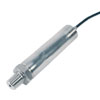
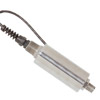
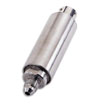
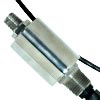
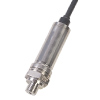
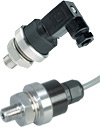
 In the airline industry weight is money. Every additional pound requires more fuel to lift...
In the airline industry weight is money. Every additional pound requires more fuel to lift...
 How to use strain gauges and optimize their performance while working with inhomogeneous materials
How to use strain gauges and optimize their performance while working with inhomogeneous materials
 Understand the necessary criteria to select the right type of pressure transducer for your application
Understand the necessary criteria to select the right type of pressure transducer for your application